#Measuring SDG Progress
Text
From the linked report:
"The protection of children from all forms of violence is a fundamental right, guaranteed by the Convention on the Rights of the Child (CRC)[1] and other international treaties
Violence can take different forms, can be perpetrated by dif- ferent individuals and can occur in different settings. Children who are exposed to or witness violence can experience acute and long-term damage to their physical, cognitive, social and emotional development. The consequences can be lifelong and transgenerational and lead to economic disadvantages and a reduced quality of life. Furthermore, evidence shows the association between exposure to violence in childhood (as a victim or witness) and the risk of experiencing or per- petrating violence during adolescence or adulthood.1 Hence, violence against children has far-reaching costs for society, slowing economic development and eroding nations’ human and social capital.
In 2015, with the launch of the Sustainable Development Goals (SDGs), the global community made a commitment to end all forms of violence against children by 2030. The SDGs include specific targets for measuring progress in this regard. In particular, Goal 16, on promoting just, peaceful and inclusive societies, includes two targets that explicitly relate to violence: target 16.1, “Significantly reduce all forms of violence and related death rates everywhere” and target 16.2, “End abuse, exploitation, trafficking and all forms of violence and torture of children”. Although the inclusion of these targets2 draws much needed attention to the importance of preventing and respond- ing to violence against children, the availability of comparable data remains limited."
As a leftist, one of my frustrations with the media of radical critique is its frequent neglect if not obliviousness to the social measurement movement - the attempt by social scientists and activists to quantify social realities in order to give policy makers and change seekers the evidence they need to press for reform.
The flagship example of this is the UN's Human Development Reports (HDR): https://hdr.undp.org. These are excellent global surveys of wide ranging social data. If you want to construct a broad picture of where our species is at across many domains of inquiry and ethical concern, start with these reports.
There exist many other social indices, and any number proposed in theory. The fact that these are not widely known in left circles, let alone used for political purposes, is an ongoing puzzle and frustration to me.
In any case, the ICVAC seems to me to be a landmark document that can direct attention and resources at what must be a top priority - the protection and care of children, and the reform of all practices and systems that would abuse and neglect them.
[1] And, of course, the US refuses to ratify the Convention. https://en.wikipedia.org/wiki/Convention_on_the_Rights_of_the_Child#United_States : "The United States government played an active role in the drafting of the convention and signed it on 16 February 1995, but has not ratified it. It has been claimed that American opposition to the convention stems primarily from political and religious conservatives."
2 notes
·
View notes
Text
Empowering Women and Girls in Andhra Pradesh: Chandrababu Naidu's Transformative Vision
In the vibrant state of Andhra Pradesh, a remarkable journey towards empowering women and girls has unfolded under the visionary leadership of Nara Chandrababu Naidu, the former Chief Minister and a driving force behind the Telugu Desam Party (TDP). Through a series of innovative initiatives and programs, Naidu's commitment to gender equality has not only created opportunities but has become a beacon of progress for the entire nation. The latest news from the Telugu Desam Party highlights the ongoing efforts to empower women and girls in Andhra Pradesh. From groundbreaking initiatives to noteworthy achievements, TDP continues to contribute significantly to the socio-economic development of women under N Chandrababu Naidu's dynamic leadership.

Among the notable achievements is the Mahila Sadhikaratha program, a testament to Naidu's commitment to breaking down barriers for women. This initiative provides skills training and financial support, enabling women to establish their businesses and achieve financial independence. By fostering entrepreneurship, TDP has paved the way for women to become active contributors to the state's economy. The Kasturba Gandhi Balika Vidyalaya (KGBV) scheme, another significant contribution by TDP, focuses on providing education to girls from disadvantaged backgrounds. This program has increased enrollment and retention rates and has been instrumental in creating a more equal playing field for girls in rural areas. TDP's commitment to education is a key driver in empowering future generations of women.
N. Chandrababu Naidu's tenure as Chief Minister saw a concerted effort to enhance the representation of women in government. TDP actively worked towards creating a more inclusive political environment through the formation of women's self-help groups and the establishment of women's councils at the village level. These initiatives reflect TDP's dedication to ensuring gender diversity in political leadership. Addressing the pressing issue of gender-based violence, N. Chandrababu Naidu introduced the Disha app in 2018. This innovative tool serves as a quick response system for women in danger, allowing them to alert police and emergency services instantly. TDP's commitment to women's safety has earned praise, showcasing its dedication to creating a secure environment for women in Andhra Pradesh.
Under Naidu's leadership, Andhra Pradesh has witnessed various campaigns and programs promoting gender equality and women's rights. Initiatives like Beti Bachao, and Beti Padhao exemplify TDP's dedication to improving the status of girls and women through education and other impactful measures. Nara Chandrababu Naidu's relentless efforts in empowering women and girls were internationally recognized when he received the United Nations Sustainable Development Goals (SDG) award in 2018. This prestigious award acknowledged Naidu's leadership in creating an inclusive and equitable society in Andhra Pradesh, aligning with the broader SDGs.
In conclusion, N Chandrababu Naidu's vision for empowering women and girls in Andhra Pradesh stands as a testament to TDP's enduring legacy. Through strategic initiatives, political inclusivity, and a commitment to eradicating gender-based disparities, TDP has become a driving force for positive change. As TDP continues to make headlines with its latest achievements, N. Chandrababu Naidu's transformative vision remains at the forefront of Andhra Pradesh's journey towards creating a more equal and empowered society.
0 notes
Text
The Sustainability Week initiative is essentially designed to galvanise momentum around sustainability in a way that helps to supercharge implementation of the 2030 Agenda for Sustainable Development.
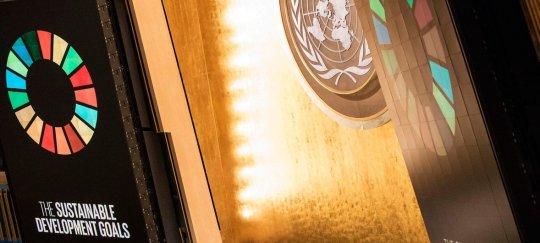
The President of the General Assembly on Tuesday announced the UN body’s inaugural Sustainability Week, encapsulating a series of high-level discussions and initiatives aimed at propelling the implementation of sustainable practices and to address pressing challenges.
To be held from 15 to 19 April, President Dennis Francis’ flagship initiative converges various mandated events into a singular, impactful week, elevating the discourse on such critical sectors as tourism, infrastructure, energy and transport.
“The Sustainability Week initiative is essentially designed to galvanise momentum around sustainability in a way that helps to supercharge implementation of the 2030 Agenda for Sustainable Development,” Mr. Francis told reporters at the UN Headquarters in New York.
He added that high-level participation is anticipated from Heads of States and Governments, sector-specific ministers and key UN officials.
Sustainability Week highlights
15 April: High-level thematic debate on debt sustainability and socioeconomic equality, highlighting the impact of surging debt on countries’ development trajectories
16 April: High-level thematic event on tourism, addressing unsustainable practices within the industry and launching a statistical framework for measuring sustainability
17 April: High-level meeting on sustainable transport, emphasising its importance in achieving several Sustainable Development Goals (SDGs)
18 April: Informal dialogue on building global resilience and promoting sustainable development through infrastructure connectivity
19 April: Global stock taking on sustainable energy, reflecting on progress and shortcomings over the UN Decade of Sustainable Energy for All 2014-2024 and launching a call to action to accelerate implementation of SDG 7 on affordable and clean energy
Assembly President Dennis Francis briefing reporters on the inaugural Sustainability Week.
Beyond the 2030 Agenda
Assembly President Francis also highlighted initiatives beyond the 2030 Agenda, including the "Choose Sustainability" campaign, which encourages stakeholders to adopt pledges and sustainability practices.
“I encourage all permanent missions, stakeholders and the media to adopt pledges to promote sustainability and to declare their support on social media while adopting sustainability practices,” he said.
For its part, his office is, among other things, working to phase out the use of roll-up banners throughout the General Assembly and to replace them with long-lasting, energy-efficient LED screens
#ungasustainabilityweek#sustainability#global goals#sustainable development goals#president of the general assembly#united nations general assembly#debt sustainability#sustainable tourism#sustainable energy#sustainable transport#sustainable infrastructure#socioeconomic equality#stakeholders#Choose Sustainability campaign#business leaders#sustainability practices#agenda 2030
0 notes
Text
Tracking progress to have global food waste.
To catalyse essential action towards reducing food waste and achieving SDG 12.3, it's imperative to grasp the extent of food waste. Measuring food waste allows countries to comprehend the magnitude of the issue, thereby revealing the size of the opportunity, while establishing a baseline for tracking progress.

The Food Waste Index Report 2021 marked a pivotal moment in understanding global food waste across retail, food service, and household sectors. It unveiled a greater availability of food waste data than anticipated, particularly at the household level, and revealed that per capita household food waste generation was more consistent worldwide than previously thought.
The Food Waste Index Report 2024 builds upon its predecessor in three key ways: Firstly, it incorporates vastly expanded data points from around the world, providing a significantly more robust global and national estimates, detailed in Chapter 2 of the main report. Secondly, it expands on the SDG 12.3 food waste measurement methodology introduced in the 2021 report, offering enhanced guidance on measurement across retail, food service, and household sectors. This additional guidance delves into various methodologies, their strengths and limitations, and strategies for prioritising sub-sectors for measurement, as explored in Chapter 3. Lastly, the report transitions from focusing solely on food waste measurement to exploring solutions for food waste reduction. The chapter examines effective approaches to reducing food waste globally, with a spotlight on public-private partnerships in this 2024 report.
Explore the Food Waste Index Report 2024!
youtube
#solutions for food waste reduction#Think.Eat.Save#united nations environment programme#household food waste#sdg 12.3 food waste indicator#food waste#food waste reduction#food waste index report#Youtube
0 notes
Text
Building Sustainable Futures: Addressing Community Needs and Development Goals.
Welcome again, changemakers and goal-getters, to the Sustainable Development Goal-diggers' hub! We’re not just dreaming of a brighter future, we're digging deep to unearth the five Sustainable Development Goals (SDGs) that will shape our community's destiny. Join us as we roll up our sleeves, grab our shovels (metaphorically, of course!), and embark on a journey of empowerment, inclusion, and positive change. It's time to dig in and make a sustainable difference!
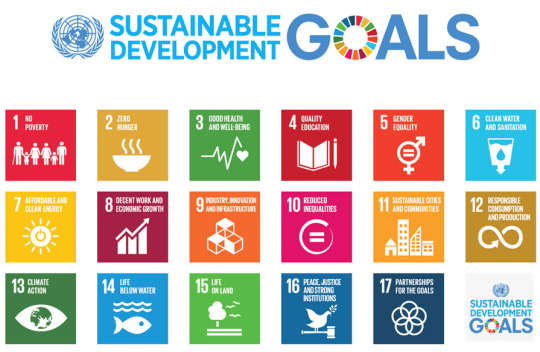
In my view, these goals serve as an excellent framework for countries to adopt and utilize as a roadmap for devising strategies to alleviate the challenges faced by individuals living in poverty. This approach compels countries to tackle the root causes of poverty, including issues like inadequate access to healthcare services, high unemployment rates, and hunger.
Why is it imperative for us to tackle these issues?
The article attached below offers a comprehensive explanation and insight into poverty and inequality, including their interconnectedness with political dynamics. While the article may not be specific to South Africa, its content remains pertinent to our context and can offer valuable perspectives.
I have finally linked my knowledge of social determinants of health to designing community programs aimed at tackling these factors. Now, I can leverage the SDGs to assess the objectives of my projects within the community and identify additional measures to achieve the goal to the fullest extent possible. By gathering resources and gaining a deeper understanding of the significance of SDGs in implementing impactful projects and strategies which is key in embracing a new perspective in my professional practice
In the Cato Manor Community and Denis Hurly, we can focus on working towards achieving SDGs such as:
Good health and well-being
Decent work
Economic growth
Quality education
Reduced inequalities

This goal is clearly defined in my work within the community. My role within SDG 3 is focused on health promotion, which involves advocating, educating, and modifying lifestyles or environments to prevent disease, injury, or unhealthy choices. The aim is to empower individuals to engage in meaningful activities and enhance their overall health and well-being. Introducing Occupational Therapy and explaining its scope of practice allows me to reach individuals who may not know where to seek help. We collaborate with healthcare providers, community clinics, and the NGO via the youth development officer to ensure that residents have equitable access to quality healthcare. We also bring OT services to the community…
In both venues where I am placed, my team and I conduct health promotion speeches three days a week. During these sessions, we educate clients about OT's role and address health-related risks and strategies for individuals and groups. For instance, I work with adolescents from challenging backgrounds, providing tailored interventions on safe sex practices, navigating teenage pregnancy, and improving self-esteem. I also work individually with mothers facing parenting and mental health challenges, ensuring their children receive early screenings for physical or developmental issues and educating mothers on supportive parenting practices.
Recently, I began working with men struggling with substance use challenges. Building their understanding of the risks and adverse effects of substance use has been challenging, as I fear losing progress the moment they leave that door. This goal prompts me to explore new strategies, such as creating health promotion pamphlets and delivering talks, to make a more significant impact on the community's health and well-being.
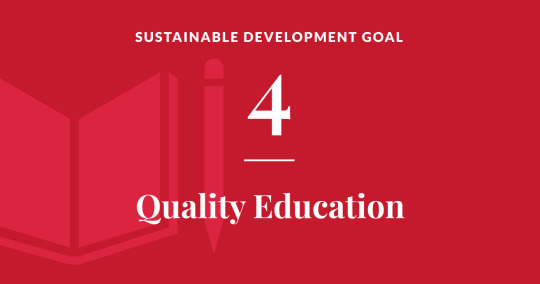
SDG 4 is aiming for quality education and there are a few targets that I contribute to when I work with the children at a crèche and adolescents at the secondary school. Some of the target aims for “equal access to quality pre-primary education” and for “universal literacy and numeracy”(The Global Goals, 2024). I contribute to this goal because I use my knowledge of play with paediatrics and incorporate it into fun activities, songs, sessions that teach the children basic learning skills such as numbers, shapes and colours and life skills such as safety. This builds the foundation of learning that all children need in order to succeed in their academic education, especially within the disadvantaged community of the Dalton Hostel. This SDG does not only focus on kids however. Within the group of young female adolescents, we have sessions on communication skills, emotional regulation, conflict resolution, and decision-making and have collaborated with the social worker at school to create an environment within the school and amongst themselves as peers.

In my practice within the community, I work with both men and women equally. There are some aspects where women need more attention. For example, maternal and child health. I do not just put my focus on the mother taking care of the child. I also consider the mother's mental health, her employment status, and her relationship with the father of her baby or her partner. I also provide the same learning opportunities for both men and women as all the projects that are run within the community.

The image above illustrates the inequalities faced by women in the workplace. They make the majority of the workers in lower income jobs. 73% of people earn less than R6 000 per month, while 3.3% earn greater than R52 000 (Opperman, 2023). This statistic indicates how there is merit for ‘reduced inequalities’ which is the tenth SDG. Here we strive to provide equal opportunities for previously disadvantaged groups and minority groups and this SDG will flow well with SDG 8 that will follow. These groups include people of colour, women, and individuals with a lower socio-economic status. In the workplace women are seen as an expense particularly when they are also mothers. According to Statistics South Africa the unemployment rate for women is 35,5% compared to 32,6% for men.
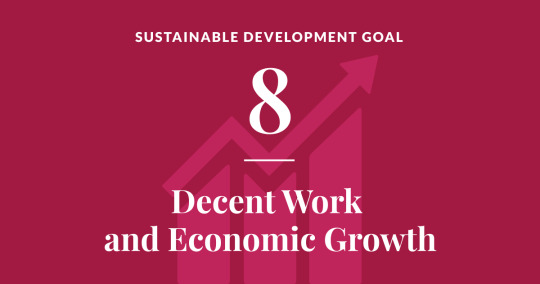
+
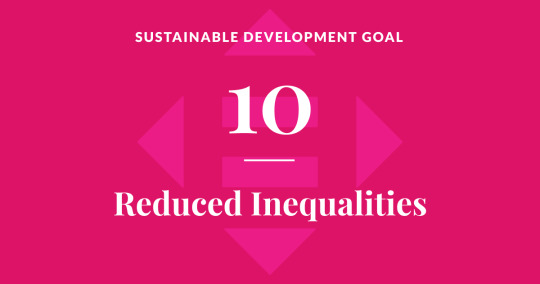
Within the women’s empowerment group at Denis Hurly Centre, my goal is to equip motivated women with basic sewing skills and skills such as financial literacy, life skills development, and self-esteem building to help homeless women regain independence and stability while providing holistic support services for homeless women including healthcare education and mental health support however poor attendance has been hindering the progression of this project. The same goes with the men from the substance use groups, incorporating the topic of employment, prevocational skills and job upskilling is important because what then when they return back from rehab to the very environment they are attempting so hard leave, employment could be the key to a healthy occupational balance and income generation to support themselves and their families. I believe SDG 8 and 10 work well in conjunction with each other and can be seen as a collective because they work towards providing skills and educational opportunities to enhance the capacity of these marginalized groups to address systemic inequalities and that programs and services are inclusive and accessible to all community members, regardless of their socioeconomic background, race, ethnicity, gender, or disability status.
As I reflect on our efforts to promote inclusion and positive change, I am reminded of the immense challenges that lie ahead. Achieving the SDGs in South Africa, particularly in communities facing socio-economic complexities like ours, is a formidable task.
The difficulties stem from a myriad of factors. Persistent inequalities, rooted in historical injustices and systemic barriers, continue to hinder progress. Limited access to essential services, including healthcare, education, and economic opportunities, poses significant challenges. Political and economic instability further exacerbates the situation, making sustainable development goals seem like distant aspirations.
Moreover, cultural norms, societal attitudes, and resistance to change can impede efforts to implement transformative initiatives effectively. The complexities of urban and rural dynamics add layers of complexity to our endeavours, requiring tailored strategies and holistic approaches to address diverse needs.
However, despite these challenges, our journey has also been marked by resilience, determination, and collective action. Through collaboration, advocacy, and community engagement, we have witnessed the power of unity and the potential for positive impact.
As I look towards the future, it is imperative that I continue to work tirelessly, leveraging partnerships, innovative solutions, and the unwavering spirit of our communities. The SDGs may seem daunting, but they also offer a roadmap—a blueprint for building a more inclusive, equitable, and sustainable society.
References
Goal 3: Good health and well-being. Goal 3: Good health and well-being | Joint SDG Fund. (n.d.). https://jointsdgfund.org/sustainable-development-goals/goal-3-good-health-and-well-being#:~:text=SDG%203%20aspires%20to%20ensure,medicines%20and%20vaccines%20for%20all
Goal 4: Quality Education. The Global Goals. (2024, January 23). https://www.globalgoals.org/goals/4-quality-education/
Hardoon, D. (2022, February 21). Inequality, measuring it and why it matters for poverty reduction. Development Initiatives. https://devinit.org/resources/inequality-measuring-poverty-reduction/#:~:text=Economic%20inequality%20is%20closely%20linked,making%20than%20the%20wealthiest%20people.
Rensburg, R. (2021). Healthcare in South Africa: how inequity is contributing to inefficiency. Retrieved from https://www.wits.ac.za/news/latest-news/opinion/2021/2021-07/healthcare-in-south-africa-how-inequity-is-contributing-to-inefficiency.html
StatsSA (2022). Nearly half of SA women are out of the labour force in Q2:2022. Retrieved from https://www.statssa.gov.za/?p=15668
StatsSA (2023). Beyond unemployment – Time-Related Underemployment in the SA labour market. Retrieved from https://www.statssa.gov.za/?p=16312
World Health Organization. (n.d.). Sustainable development goals. World Health Organization. https://www.who.int/europe/about-us/our-work/sustainable-development-goals#:~:text=The%20Sustainable%20Development%20Goals%20(SDGs,no%20one%20is%20left%20behind
0 notes
Text
Partnerships to strengthen the Inter-American Decade of Rural Women, Adolescents and Girls of the Americas and its globalization, CIM/OAS (CSW68 Side Event).
Contributing to the development of public policies to guarantee the human rights of rural women as local actors in the care for life, food, and territorial development.
Public policies for equal opportunities, empowerment and the full exercise of women's human rights are based on a wide series of international and regional commitments, including CEDAW (1979), the Belem Do Para Convention (1994), the Beijing Platform for Action (1995), and the Sustainable Development Goals (SDGs) of the 2030 Agenda (2015), in particular, SDG 5 "Achieve gender equality and empower all women and girls."
Panama, as President of the Inter-American Commission of Women (CIM) of the Organization of American States (OAS) for the term 2022 and 2025, promoted together with the countries of the region, the adoption of the Declaration for the Rights of All Women, Adolescents, and Girls in Rural Environments in the Americas (AG/DEC. 113 (LIII-O/23)) during the 53rd regular session of the OAS General Assembly (June 22, 2023). Among other commitments, this Declaration established the Inter-American Decade for the rights of all women, adolescents, and girls in rural environments of the Americas, with the objective of "…promoting progressive measures for the advancement of all their rights and the eradication of all forms of discrimination they face."
Related Sites and Documents
Concept Note
Watch the Partnerships to strengthen the Inter-American Decade of Rural Women, Adolescents and Girls of the Americas and its globalization, CIM/OAS (CSW68 Side Event).

#Organization of American States (OAS)#SDG5#Public policies#women's rights#gender equality#women#Inter-American Decade for the rights of all women#rural environment
0 notes
Text
Towards international statistical guidelines on the prevalence of trafficking in persons.

This side event to the 55th Session of the United Nations Statistical Commission will support the agenda item on "data and indicators for the 2030 Agenda on Sustainable Development", notably SDG Indicator 16.2.2, by providing a first opportunity to discuss the challenges of prevalence estimates at a global level.
Every year, more than 50,000 people are identified as victims of trafficking in persons. Among them, many are supported, but little is known about those who remain in trafficking and exploitative situations, beyond the reach of authorities and protection services. SDG Indicator 16.2.2. on "Number of victims of human trafficking per 100,000 population, by sex, age and form of exploitation" aims at tracking the world's progress in reducing the prevalence of trafficking in persons, but no universal statistical standard yet exists to collect robust and comparable data on the actual scale of the phenomenon. The new #STATIP (Standard Tools for Analysis of Trafficking in Persons) project, conducted jointly, at the UN level, by the International Labour Organization (ILO), the UNODC - United Nations Office on Drugs and Crime and the IOM - UN Migration aims to close that gap, by creating a #statisticalframework to define #traffickinginpersons for prevalence surveys, with submission to the United Nations Statistical Commission expected in 2026. This framework will facilitate the measurement of prevalence by improving the quality and consistency of local, national, regional and global Statistical estimates, and thereby providing reliable evidence to devise more effective and refined anti-trafficking policies.
#UN Migration#International Labour Organization#unodc#StatistIcal guidelines#un55sc#side events#sdgs#data and indicators#antitraffickingpolicies
0 notes
Text
Thoughts on SDG's and Businesses.
Sustainable development goals are a monumental global endeavor and are the primary reason why governments are encouraging businesses to follow sustainable practices. Even the sustainability report of businesses here in the Philippines indicates which of the 17 SDGs they are targetting. I have a little experience in collecting production reports of various commodities from different countries. It's part of my job as an agribusiness researcher. From my experience, I know that the data from different countries come from different sources, and follow different standards and measurements. Getting an accurate source of data is difficult, but most of the time it is enough to benchmark different countries when it comes to certain metrics like production, import, and export. I can only imagine how difficult it would be to measure the different Key Performance Indicators that the United Nations is using to measure the progress of each country in achieving sustainable development goals.
Although most United Nations member states are signatories to the sustainable development goals not everyone has the same capacity to achieve them. Different countries already have their own development plan and aligning these to the SDGs for the next 15 to 30 years can be difficult. As stated earlier, not every country is equipped to monitor the progress of each SDG in their territory. Climate change and all of the SDGs attached to it is a major obstacle. Like Greta Thunberg, the SDG initiative did an excellent job of putting emphasis on key humanitarian and environmental issues. However, this doesn't remove the fact that the United Nations does not have any binding authority over its member states and the action that we need can be very limited. Despite these, the cooperation of each country can be felt through this initiative. As I previously said, the international community is indeed capable of overcoming monumental tasks when properly motivated. A classic example of this is our progress in helping the Ozone Layer recover. We did this by globally reducing our emissions of CFCs.
The government is critical when trying to implement the SDGs. Here in the Philippines, the presence of the United Nations can be felt and a lot of businesses and organizations advocate and even try to contribute to the goals. Tracking the SDGs is hard, but according to the online tracker of the United Nations, the Philippines currently ranks 98 out of 166 nations. Although the government in general is cooperative when it comes to the initiatives of the United Nations, there are times when individual leaders would go against certain committees of the UN and would sometimes tell them not to meddle with national affairs. Despite these isolated cases, the government has acknowledged these initiatives and has even crafted policies to encourage business towards sustainability.
Businesses are the drivers of a country's economy and can be a good catalyst in achieving sustainable development goals. Businesses are the main sources of innovations and technology. These new innovations are vital when combating climate change and other insecurities. Many businesses are serious when it comes to their corporate social responsibility and ESG. This means that if properly motivated, businesses can become leaders in achieving the SDGs. Big businesses like Levi Strauss have a heavy influence over the supply chain. If an industry leader like Levi’s adopts sustainable practices, this will also affect the vast supply chain and smaller businesses. Businesses also have the ability to influence consumer preference, education, and practices. Focusing on business sustainability is really the way to go if we want to achieve the SDGs. A culture of sustainability must be developed and this starts with industry leaders.
0 notes
Text
"Cultivating Tomorrow's Tech Leaders: The Essence of Technopreneurship and the Power of Creative Collaboration"
Blog 1 - February 18, 2024

As we settled into our seats, the anticipation was palpable. Engr. Jael, our guide in this technopreneurial adventure, kicked off the session with a Facebook video that served as our initiation into the course. The video was a captivating introduction to the world of technopreneurship, laying out the foundations, rules, and a sneak peek into the future tasks that awaited us.
Continuing our journey, we were assigned to take the Myers-Briggs Personality Test and the Innovation Index Test. The visual representations of our outcomes are presented in the images below, offering insights into both our personal traits and the extent of our capabilities in contributing to business endeavors.
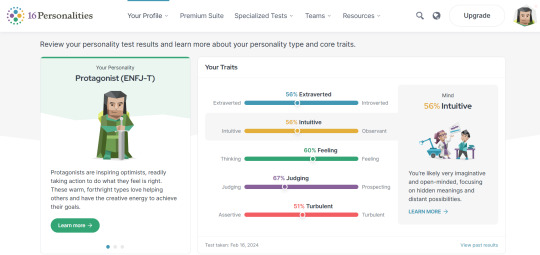

GAME 1
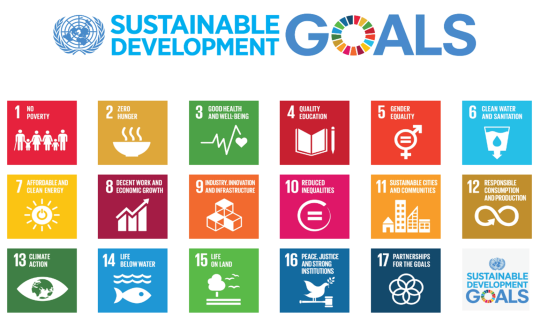
What is SDG?
SDG stands for Sustainable Development Goals. The Sustainable Development Goals are a set of 17 global goals established by the United Nations in September 2015. These goals are designed to address various global challenges and promote sustainable development by 2030. The SDGs cover a wide range of issues, including poverty, hunger, health, education, gender equality, clean water, sanitation, climate action, and more. The aim is to encourage countries, organizations, and individuals to work collaboratively to achieve a more equitable, sustainable, and prosperous world. Each goal has specific targets and indicators to measure progress. The SDGs build upon the Millennium Development Goals (MDGs) and provide a comprehensive framework for addressing social, economic, and environmental issues on a global scale.


We have been assigned a group collaboration project called Game 1, which falls within the academic framework of our group concentrating on the Sustainable Development Goals (SDGs). Our primary focus is on critically examining and intervening in Sustainable Development Goal 6 (SDG 6) - Clean Water and Sanitation. Specifically, we are addressing the pressing issue of limited access to clean drinking water in Cagayan de Oro (CDO), a challenge significantly affecting students in various areas.
After brainstorming, we have identified different problems related to the SDGs, and as a result, we have decided to work on developing a portable water filtering device to address the clean water scarcity issue.
Aaron Jon L. Arellano
BSME_3A
1 note
·
View note
Text
Reimagine the Future, SMARTer: Achieving the SDGs through Strategic Thinking
Blog 1 - February 18, 2024

During our first meeting for the technopreneurship course, our instructor, Engineer Marberth, showed us a recorded video that discussed the various course requirements and their significance for us as future engineers. The video states that in order to determine whether we have made progress, we must take the Myers-Briggs Personality Test and the Innovation Index Test during the first and last weeks of the semester. The purpose of the innovation test was to examine our innovative mentality. Based on my results, I scored 60.92 out of 100, which is lower than I had anticipated. My personality test results, on the other hand, indicate that I am an ISFP-T, or adventurous kind of person. Individuals with the ISFP personality type are recognized for their spontaneous nature, who enjoy experimenting and exploring with themselves and their ideas and are also service-oriented and express genuine concern for others through actions rather than words.
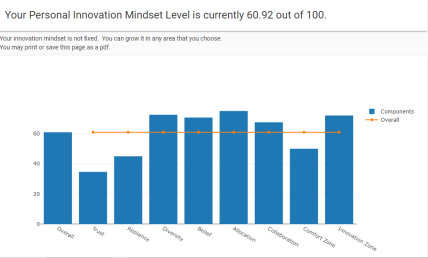

Additionally, we did an activity that required cooperation and brainstorming about the 17 Sustainable Development Goals (SDGs) established by the UN. The SDGs seek to change the world. They serve as a call to action to eliminate poverty and injustice, save the environment, and guarantee the well-being, fairness, and prosperity of all people. My groupmates and I decided to concentrate on the 6th Sustainable Development Goal (SDG), which is Clean Water and Sanitation. As most of us noticed that, the unfiltered and contaminated water is one of the most common problem that people encounter especially in our area. A Water Filtering device can be used to solve this issue. During the decision-making process, we took into account many aspects such as if it is S.M.A.R.T. (specific, measurable, achievable, relevant, time-bounded) nature how we may be able to use our future profession as a mechanical engineering student to improve the Cleanliness and Sanitation of water.
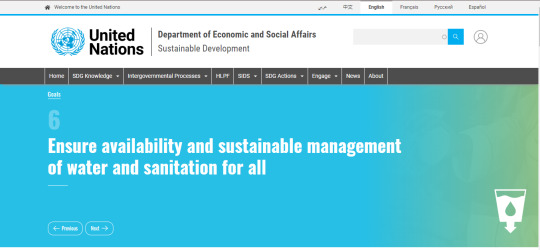
My experience in the 1st week of our technopreneurship course has been both enlightening and eye-opening. The emphasis on self-awareness through personality tests like the Myers-Briggs and the Innovation Index has provided valuable insights into my strengths and areas for growth as a future engineer. Despite initially scoring lower than expected on the innovation test, I recognize the opportunity for personal development and am committed to fostering a more innovative mindset. Furthermore, our group's focus on the 6th Sustainable Development Goal underscores the importance of addressing pressing global issues like access to clean water and sanitation. By harnessing our adventurous spirit and commitment to service, I believe we can make meaningful contributions towards achieving a more sustainable and equitable world.
April Jean T. Tacbobo - ME 3A
0 notes
Text
Fitbit for fitness
Sports monitors can be a tremendous way of keeping track of your fitness over short and long periods. Equipment such as the Fitbit wrist monitor, which was first made in 2009, has rose in popularity over the past few years. The easy to use wrist monitor is a very common sight in all sorts of people nowadays. The users can range from anyone just starting out in fitness and simply wanting to track things such as how many steps they manage in a day, to people that have been keeping track of their fitness for years and want to know more complex data for things such as sleep.
It is very clear of how Fitbit monitors can have a huge impact on the health and well-being of people. Motivation can be a massive factor in people wanting to get started on a fitness journey and with the use of Fitbits this can make it a lot easier for people. Even something as simple as trying to reach the ten thousand steps a day can be motivation for people to go out and do some exercise. Even if this is just simply going for a walk to improve on their daily step count, people will be more likely to want to go out and do this if they can see the data right there on their wrists. Even the data alone can be motivation for people to get into fitness. Some people may be put off if they were to see big complex numbers and graphs but the fact the data on a Fitbit is very easy to interpret means that people don't have to worry about not knowing how to understand their own data. For people more into their fitness it is still a very useful tool to use in day to day life. Tracking things such as sleep would be near on impossible without the use of some sort of monitor and the fact a Fitbit is able to do this, as well as the countless other tasks, really proves how powerful a tool it can be.
Of course, like everything in life, there can be some cons to wearing the Fitbit. Inaccurate results can be one of these. When measuring your step count the results could be swayed. Results may be worsened if your arms are not swinging throughout a walk or, on the flip side, if your arms are moving whilst you're not walking it can make the results seem a lot bigger than usual. Although this might now make a big difference in the numbers it may be demotivating for people seeing their numbers so low after going out a big walk or long piece of exercise. Another con may be the fear of competition. On the Fitbit app you are able to compare your exercise data with your friend that also have the app. Although this can be a positive amongst athletes and competition can drive them to even greater heights, for beginners the fear of competition amongst friends can be overwhelming and can lead to them stopping prematurely to avoid things like embarrassment. People may feel anxious about comparing their scores as they might not want other people to see all their activity. But, this is also a positive feature on the app as people who strive off of competition will be more inclined to go out and keep exercising even when they might not feel like it.
The SDG goal that the Fitbit is able to help with is good health and well being. People, everyday, all around the world try to maintain good quality fitness to better themselves and to keep up good health. The Fitbit is a piece of equipment that as of 2022 over 120 million people use worldwide. From the amount of users alone it is obvious how influential simply having a Fitbit can be for the improvement of peoples health and well being. If people can keep using the Fitbit then progression in health and well-being should keep on an upward trend.

Wakefield.gov.uk. (2024). UN Sustainable Development Goals.jpg. [online] Available at: https://consult.wakefield.gov.uk/events/35784/popimage_d388068e1180.html [Accessed 3 Feb. 2024].
Bibliography:
cycles, T. text provides general information S. assumes no liability for the information given being complete or correct D. to varying update and Text, S.C.D.M. up-to-Date D.T.R. in the (2023). Topic: Fitbit. [online] Statista. Available at: https://www.statista.com/topics/2595/fitbit/#topicOverview.
GCFGlobal.org. (n.d.). Wearables: What is a Fitbit? [online] Available at: https://edu.gcfglobal.org/en/wearables/what-is-a-fitbit/1/.
Santo, B. (2019). The Consumer Electronics Hall of Fame: Fitbit. [online] IEEE Spectrum. Available at: https://spectrum.ieee.org/the-consumer-electronics-hall-of-fame-fitbit.
1 note
·
View note
Text
How might India's creation of specialized farm indices elevate agricultural productivity and boost farmers' incomes effectively?
India is preparing to change its agricultural sector, considering the need for farm sector indices. These are all integral parts of a comprehensive plan to carry out targeted policy interventions to raise agricultural productivity and income. This strategy is based on the difficulties in implementing agricultural reforms using the farm laws previously announced by this government, which were subsequently withdrawn.
Kisan App

One high-ranking government official who spoke to ET revealed that work on this revolutionary enterprise is already under way at both Niti Aayog and the Ministry of Agriculture and Farmers Welfare. The likely policy interventions envisioned are to be unveiled after the general elections in 2024. Taking a broad approach, Niti Aayog is deeply involved in developing indices covering the entire agricultural and rural scene. These indices will not only measure the performance of existing schemes, they will also help identify weak spots in flagship programs so that their outcomes can be improved.
Kisan App
The overall objective is to create a sustainable food regime for the entire country under principles of natural farming. At the same time, it is hoped that incomes from farming will increase markedly, thereby further raising demand and consumption in the countryside. This policy approach, explained an unnamed official, is aimed at introducing targeted policies promoting water-saving farming techniques, raising related incentives for switching to crops requiring less water and integrating farmers into the supply chain so as to reduce their reliance on middlemen.
The government believes that sustainable food systems are not only key to eliminating hunger, but also one of the 17 Sustainable Development Goals. Of these goals, 12 are directly related to agriculture. India has agreed to attain these SDGs by 2030.
Niti Aayog, the government's think tank, has also undertaken collaborations with research institutes and experts to generate insights and suggestions that can form the basis of a sector-specific policy framework in tune with India's developmental goals. More recently the University signed a statement of intent with the International Food Policy Research Institute (IFPRI) and other engagements are in the offing with additional institutes and individuals.
With more than 70 % of rural households reliant on agriculture for their livelihoods, this sector is the backbone of the economy. The agricultural sector now accounts for about 17 % of the total GDP and provides employment to some 58 % of the population. Its transformation, besides improving economic indicators, has great potential in terms of promoting sustainable development and social progress.
#farming#agriculture#farm#farmlife#farmer#tractor#nature#crop#farminglife#india#agriculturenewsnetwork
0 notes
Text
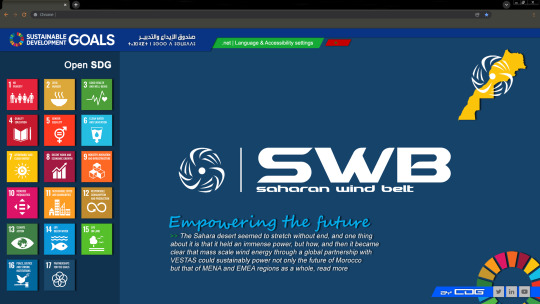
5 important projects so far to drive SDG's framework as a whole in Morocco and regionally, securing sustainable cost effective water and energy, also fighting deforestation, desertification and becoming carbon neutral, collaborating globally for the implementation of SDG's
And yes revisiting the ancient medinas of Morocco to add to worldwide heritage and enhance the tourism attractivity of the Kingdom
Looking at the rest of SDG's they seem to be based mostly on modernizing state institutions or infrastructures, while implementing measures, which are progressive in nature but still in conformity with the culture and traditions of Morocco
A matter of drivers, large scale programs, projects and initiatives, it's is not all big industry either some of it is minute but it adds up when it is scaled nationally, as in fighting income inequality and furthering gender equality through micro credits and cooperatives
Baseline funding can make or break SDG's, and the action of the SDG Fund is key, not only for Morocco, these are costly goals to attain yet the price of not attaining them is higher
I have no idea how much the SDG Fund is, but I can already tell it should be 100 times that, right 70M USD, 7BN USD is a tenth of excess global liquidity on financial markets, that they do no know what to do with
I think yes that SDG Fund has to be capitalized at 700BN USD, it is neither a far fetched figure, nor is it unattainable, and it does reflect the global scope of SDG's and its 191 member parties
Basically that increases SDG funding by 1K %, before leverage, I am convinced that SDG Fund can successfully leverage 1 Dollar to 2.37, and that would the be the SDG funding, that is needed, that we are looking to
Thank you for having followed
0 notes
Text
Top Countries Leading the Race towards Net Zero
A Closer Look at their Sustainable Development Goals
05 August, 2023
WOCE Team
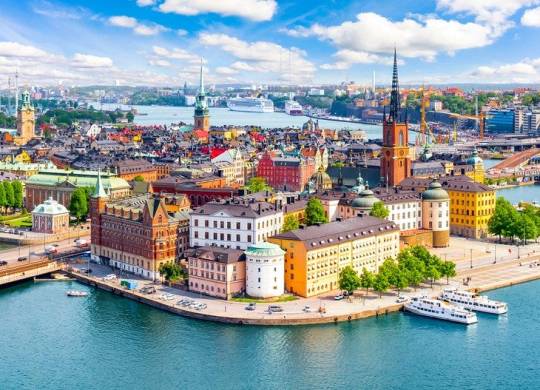
As the world grapples with the urgent need to combat climate change, several countries have emerged as leaders in the race towards achieving net zero emissions. These forward-thinking nations have not only set ambitious targets to reduce greenhouse gas emissions, but they have also incorporated sustainable development goals into their strategies. In this article, we will take a closer look at the top countries leading the charge towards a sustainable future and examine how they are aligning their efforts with the United Nations’ Sustainable Development Goals (SDGs). From innovative renewable energy projects to transformative policies.
Join us as we delve into the strategies and initiatives of these trailblazing countries, highlighting their commitment to not only mitigating climate change but also fostering social and economic progress. Discover how these nations are redefining what it means to achieve net zero emissions and how their sustainable development goals are shaping their journey towards a more sustainable future.
Why net zero emissions are important for the environment
Net zero emissions refer to the balance between the amount of greenhouse gases emitted into the atmosphere and the amount removed or offset. Achieving net zero emissions is crucial to combating climate change and its devastating effects on the environment. By reducing greenhouse gas emissions to net zero, we can stabilize the global temperature increase and prevent catastrophic consequences such as extreme weather events, rising sea levels, and loss of biodiversity.
The transition to net zero emissions requires a holistic approach that encompasses various sectors such as energy, transportation, agriculture, and industry. It involves implementing renewable energy sources, improving energy efficiency, adopting sustainable land-use practices, and promoting circular economies. By embracing these strategies, countries can not only mitigate climate change but also create green jobs, enhance energy security, and improve public health.
The role of sustainable development goals in achieving net zero emissions
The United Nations’ Sustainable Development Goals (SDGs) provide a comprehensive framework for countries to address the interconnected challenges of sustainable development, including climate change. The SDGs consist of 17 goals, each with specific targets to be achieved by 2030. These goals encompass a wide range of issues, including poverty eradication, gender equality, clean energy, sustainable cities, and climate action.
In the context of achieving net zero emissions, sustainable development goals play a crucial role. They provide countries with a roadmap to integrate climate action into their overall development strategies. By aligning their efforts with the SDGs, countries can ensure that their transition to net zero emissions is socially inclusive, economically viable, and environmentally sustainable.
Exploring the top 5 countries leading the race to net zero emissions

1. Sweden
Sweden has emerged as a global leader in the race towards net zero emissions. With a strong commitment to sustainable development, this country has set ambitious targets to reduce greenhouse gas emissions and transition to renewable energy sources. Their sustainable development goals include achieving universal access to clean energy, promoting sustainable agriculture, and building resilient infrastructure.
To achieve these goals, Sweden has implemented various initiatives and policies, including:
1. Heavy investments in renewable energy projects, such as wind and solar farms.
2. Implementation of energy efficiency measures across different sectors.
3. Adoption of carbon pricing mechanisms to incentivize emission reductions and promote low-carbon technologies.
These efforts have led to significant outcomes:
1. Reduction of greenhouse gas emissions.
2. Creation of new job opportunities.
3. Stimulated economic growth.
2. Norway
Norway is another frontrunner in the race towards net zero emissions. They have recognized the importance of sustainable development and have integrated it into their national policies and strategies. Their sustainable development goals include promoting sustainable cities and communities, ensuring access to affordable and clean energy, and taking urgent action to combat climate change.
To achieve these goals, Norway has implemented a range of initiatives, including:
1. Investment in public transportation systems to diminish vehicle emissions.
2. Encouragement of electric vehicle use through incentives and infrastructure development.
3. Implementation of energy efficiency programs in buildings and industries, resulting in reduced energy and greenhouse gas emissions.
4. Active participation in international collaborations to share best practices and expedite the transition to a low-carbon economy.
3. Denmark
Denmark has demonstrated a strong commitment to sustainable development and has made significant progress towards achieving net zero emissions. Their sustainable development goals encompass a wide range of areas, including affordable and clean energy, sustainable consumption and production, and climate action.
To achieve these goals, Denmark has implemented innovative policies and initiatives, which include:
Renewable Energy Projects:
1. Investment in large-scale solar and wind farms.
2. Implementation of energy efficiency measures within buildings and industries.
Sustainable Land-Use Practices:
1. Adoption of reforestation and afforestation to absorb carbon dioxide from the atmosphere.
Positive Outcomes:
1. Reduction of greenhouse gas emissions.
2. Enhancement of energy security.
3. Improvement of air quality.
4. Switzerland
Switzerland has emerged as a leader in sustainable development and has made significant strides towards achieving net zero emissions. Their sustainable development goals include promoting sustainable economic growth, ensuring access to affordable and clean energy, and taking urgent action to combat climate change.
To achieve these goals, Switzerland has implemented transformative policies and initiatives, including:
Investment in Renewable Energy:
1. Emphasis on renewable energy sources like solar and wind power.
2. Implementation of energy efficiency measures within buildings and industries.
Sustainable Transportation Systems:
1. Promotion of electric vehicles.
2. Development of efficient public transportation networks.
Positive Outcomes:
1. Reduction of greenhouse gas emissions.
2. Creation of new job opportunities.
3. Stimulation of economic growth.
5. Austria
Austria is at the forefront of the race towards net zero emissions. Their sustainable development goals encompass a wide range of areas, including affordable and clean energy, sustainable cities and communities, and climate action.
To achieve these goals, Austria has implemented bold initiatives and policies, which include:
Investment in Renewable Energy:
1. Heavy investment in renewable energy projects, including offshore wind farms and solar power installations
Energy Efficiency Measures:
1. Implementation of energy efficiency measures across various sectors
2. Reduction of energy consumption and greenhouse gas emissions
Sustainable Transportation Systems:
1. Promotion of electric vehicles
2. Development of cycling infrastructure
Positive Outcomes:
1. Reduction of greenhouse gas emissions
2. Improvement of air quality
3. Enhancement of the quality of life for citizens
Key takeaways and lessons from the top country’s efforts

The efforts of the top countries leading the race to net zero emissions provide valuable lessons and insights for the global community. Firstly, their commitment to sustainable development goals has been instrumental in driving their transition to a low-carbon economy. By integrating climate action into their overall development strategies, these countries have ensured that their efforts are comprehensive and sustainable.
Secondly, international collaboration has played a crucial role in accelerating the transition to net zero emissions. The exchange of knowledge, best practices, and technologies has enabled countries to learn from each other and implement effective strategies. It is essential for countries to collaborate and support each other in achieving their sustainable development goals and mitigating climate change.
Lastly, the top countries’ efforts have demonstrated that achieving net zero emissions is not only crucial for the environment but also beneficial for social and economic progress. The transition to a low-carbon economy has created new job opportunities, enhanced energy security, and improved public health. It is a win-win situation that enables countries to address climate change while fostering sustainable development.
The importance of international collaboration for achieving net zero emissions
The transition to net zero emissions requires global cooperation and collaboration. No single country can achieve this goal alone. It is crucial for countries to work together, share knowledge and resources, and support each other in their efforts to mitigate climate change.
International collaboration can take various forms, including sharing best practices, technology transfer, financial support, and capacity building. By collaborating, countries can accelerate the transition to a low-carbon economy and achieve their sustainable development goals more effectively.
Furthermore, international collaboration can foster innovation and drive the development of new technologies and solutions. By pooling resources and expertise, countries can overcome common challenges and find innovative solutions to mitigate climate change.
Conclusion: The future of net zero emissions and sustainable development goals
The top countries leading the race to net zero emissions have shown that achieving this goal is not only possible but also beneficial for social, economic, and environmental progress. Their efforts to align with the United Nations’ Sustainable Development Goals have ensured that their transition to a low-carbon economy is holistic and inclusive.
As the world faces the urgent need to combat climate change, it is crucial for more countries to follow in the footsteps of these trailblazing nations. By setting ambitious targets, implementing transformative policies, and collaborating internationally, countries can pave the way for a greener and more sustainable future.
The journey towards net zero emissions and the achievement of sustainable development goals requires collective action and a commitment to long-term change. By working together, countries can create a world where economic prosperity and environmental sustainability go hand in hand. It is up to us to make the necessary changes and build a better future for generations to come.
#10 simple ways to reduce your carbon footprint#co2 emissions#carbon footprint calculation#carbon footprint#carbon credit price today in india#sustainability reporting#net zero emissions
0 notes
Text
As the United Nations General Assembly gathers for its 78th session, it does so in the wake of a summer that has repeatedly shown the global dashboard to be flashing red. Climate records have been smashed, with the highest average temperatures in thousands of years and devastating flooding from India and China to Norway and Greece. The Black Sea grain deal, intended to alleviate high food prices in lower-income countries, has broken down. Military takeovers in Niger and now Gabon bring the number of coups in West and Central Africa since 2020 to eight.
Confirmation of that gloomy picture will come at the summit on the Sustainable Development Goals (SDGs) on Sept.18-19 . This was meant to be a midway progress review: the implementation period for the 17 interlinked objectives, which include ending extreme poverty and hunger, began in 2016 and is due to end in 2030. The world is far from the right track. Out of 140 metrics by which the SDGs are measured, half are not on the desired trajectory and about one-third have stalled or gone into reverse.
That makes the interinstitutional squabbles over the summit’s desired outcomes especially dismal. The U.S. administration and its allies reportedly objected to calls in its draft declaration to reform the international financial system. It is a familiar stumbling block: rich-world national governments and the Bretton Woods international financial institutions bridling at any moves by the United Nations to stray into “their” territory. But the United States and its friends are not the only ones resurrecting red lines better suited to the history books than the present crisis. India and its allies also reportedly clashed over whether to make reference to the G-20 in the draft declaration.
Old ghosts seem to dog the process and allow no one to raise their eyes to the looming crises. These disputes risk making this crucial SDGs summit a flop. That would be doubly disastrous: virtually dooming the goals to nonfulfillment and casting a heavy shadow over the U.N.’s Summit of the Future, billed as a once-in-a-generation opportunity to renew global governance but already postponed from this year to next. Whatever the historical rights and wrongs of these interinstitutional suspicions, they are utterly out of step with the moment. Time and trust are running out, both on the SDGs and the wider restoration and renewal of the multilateral system.
That very urgency, however, also makes this a window of opportunity. Governments and institutions are recognizing that in our age of “poly-crisis,” new ambition is needed. Dynamic coalitions and initiatives are coalescing, like the Bridgetown Initiative, launched by Barbadian Prime Minister Mia Mottley to create additional fiscal space for climate and development spending. The Paris summit on climate and development finance in June may not have generated commitments on the transformative scale needed, but it represented a newly open and, crucially, political conversation on those topics between the so-called global north and global south.
New ideas and proposals are percolating through the international system. Take the report published in June by the G-20 independent expert group on strengthening multilateral development banks. It called for bold action on three fronts: adding global public goods to the banks’ existing goals of eliminating extreme poverty and boosting shared prosperity; marshalling new financial firepower to triple their lending by 2030 to $300 billion annually; and establishing a new “global challenges” mechanism enabling coalitions of sovereign and nonsovereign entities to crowd in lending alongside the multilateral development banks. This “triple agenda” ought to represent the realm of the eminently possible.
These new realignments, coalitions, impetuses, and ideas would make the failure of the SDG summit all the more lamentable. History will not be kind to leaders too tangled up in the intrigues and rivalries of corridors of power in Washington and New York to seize the opportunities of the moment. International financial institutions and national governments, particularly Western ones whose standing in the global system is already under strain, should welcome the U.N.’s engagement.
For its part, the U.N. system needs to find the versatility and nimbleness needed to marshal a consensus. Its architecture is creaking, built for a postwar world very different from today’s permanently shifting multipolarity. This is a reality further underscored by the G-20 summit in New Delhi last weekend, both in its strong focus on global governance reform and its diplomatically tortuous declaration skirting around Russia’s aggression against Ukraine. The old western powers backed down to accommodate their Indian hosts and their major developing country allies. That may not be a comfortable development, but it is a recognition that power is shifting globally and needs to do so at the United Nations, too.
Our collective priority must be restoring multilateralism and guiding the world onto a better course, including comprehensively meeting the SDGs by the goal of 2030. A new global polling report by Open Society Foundations, the philanthropy that I lead, ought to focus minds. Charting the attitudes of more than 36,000 respondents in a representative group of 30 countries, the Open Society Barometer documents a widespread appetite for greater ambition. Among those we surveyed, 65 percent agreed that lower-income countries should have a greater say on international financial decisions, 68 percent said that high-income countries should increase the World Bank’s funds, and 70 percent were anxious that climate change could have a negative impact on their lives in the next year.
Those figures and the expectations that they represent, not comparatively petty institutional squabbles, should be at the top of minds in Turtle Bay next week. There is not yet much sign that they will be. New Yorkers famously hate U.N. General Assembly for the traffic gridlock it produces. This year, they may have more grounds than ever for their impatience.
1 note
·
View note
Text
Over 330 million children worldwide living in extreme poverty
One in every six children is forced to survive on less than $2.15 a day, according to a new report from the UN Children’s Fund (UNICEF) and the World Bank released on Wednesday.
The findings show that 333 million children worldwide are living in extreme poverty – a decrease of almost 50 million over the course of the past decade.
However, the report’s authors say that millions more should have been lifted out of extreme poverty had it not been for three years of COVID-19-related disruptions.
‘Stalled progress’
UNICEF Executive Director Catherine Russell said that the effects of the pandemic as well as conflict, climate change and economic shocks, have “stalled progress” on ending child poverty.
She called for redoubled efforts to ensure that all children have access to essential services, including education, nutrition, health care and social protection, while addressing the root causes of extreme poverty.
“We cannot fail these children now,” she said.
Sub-Saharan Africa most affected
The report shows that globally, children comprise more than 50 per cent of the extreme poor, despite making up only a third of the world’s population.
Nearly 90 per cent of children caught in extreme poverty reside in either sub-Saharan Africa or South Asia. Sub-Saharan Africa has both the highest rate, at 40 per cent in 2022, and the largest share of the world’s extreme poor children, over 71 per cent – a significant jump from just under 55 per cent 10 years ago.
Authors say that rapid population growth and “limited” social protection measures have contributed to this steep increase. Meanwhile, all other regions in the world except the Middle East and North Africa have seen a “steady decline” in extreme poverty rates.
Impact of conflict, lack of education
Children living in rural settings and those living in households where the head has little or no education are “significantly more affected” by extreme poverty, the report says.
An estimated one in three children in countries affected by conflict live in extremely poor households, compared to one in 10 in “non-fragile states”.
Falling behind
The report warns that, at current rates of reduction, the Sustainable Development Goal (SDGs) of ending extreme child poverty by 2030, or SDG 1, will not be met.
At the Human Rights Council earlier this week, UN rights chief Volker Türk called the world’s insufficient progress towards this goal a “terrible collective human rights failure”.
The issue will be high on the agenda of the High-level Week of the United Nations General Assembly (18 – 22 September), when global leaders will discuss the road towards the SDGs at the halfway point.
Kicking off the High-level week, an SDG Summit will aim to accelerate action for the 17 Goals and is expected to adopt a political declaration.
0 notes